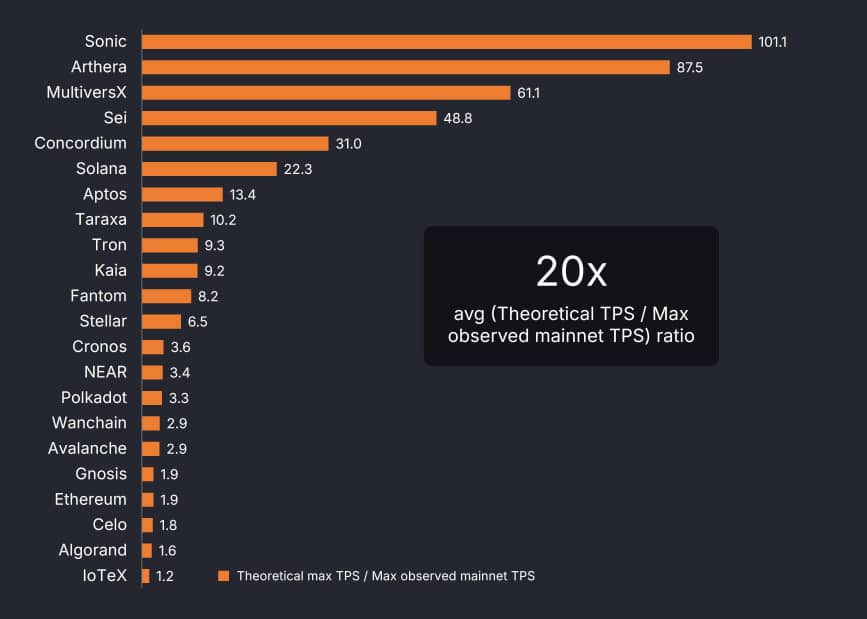Steven Pu, co -founder of Layer -1 blockchain Tarxa, released a report on 24 February, which was claimed and highlighted a significant difference between the actual blockchain performance.
Analysis of 22 Network analysis using data from chainpects, the study found that the theoretical transactions per second (TPS) per second (TPS) are 20 times higher than the real -world results. As conclusionThis discrepancy stems from a lab-based matrix that fails to hold on live mennets.
A new metric has been introduced in the report: a dollar is spent on a verification node (TPS/$) per dollar, aimed at measuring cost-defense rather than only raw speed. Across 22 series, theoretical TPS averaged 20 times more than the mennet performance, with only four networks double-design TPS/$ ratio.
The PU argues that it shows that many blockchain requires expensive hardware for minor transactions, challenging claims of scalability and decentralization.
“We all should live with transparent, verified, on-chain performance metrics,” according to the study.

Blockchain scalability questioned
PU’s findings show that the industry focuses on high TPS misleading stakeholders. For example, bitcoin (BTC) and atherium (ath) prefer greater protection from speed, while new chains avoids a large number of which are rarely physical. TPS/$ MT can shift how developers assess the network for practical use cases such as payment or supply chain tracking. The report states that,
Max visited Mennet TPS for the network included in a 100-block window (TX/S)
It is worth noting that chainpects exclude transactions exclusively that can inflape this maximum TPS metric, such as voting transactions
Tarxa pushes for transparency
Taraxa, a proof-of-set layer-1, which focuses on the audit logging, frames it as a wake-up call. PUA Stanford-Educated Entrepreneur, requests the dependence on verification -able mannet data on whitepaper hyp.
It comes in the form of crypto space grapes with adopting barriers. Full data can distort the decisions of investment and development, especially in cases of decentralized finance and supply chain uses that seek reliable performance. PU suggests how to re-evaluate the blockchain stability that can redefine the cost-evidence-like metrics such as TPS/$, focusing on the network that provides practical value instead of high theoretical speed.



